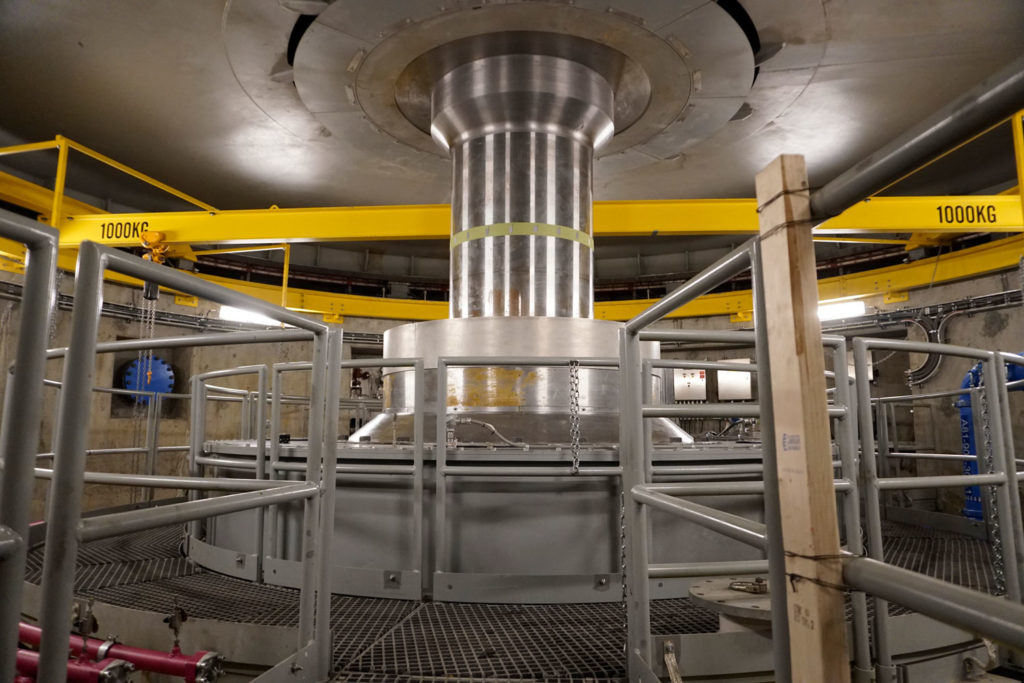Feb 17, 2021
On February 16, at 2:55 p.m., the first of seven generating units at Keeyask was brought into service and is now connected to the Manitoba Hydro power grid, supplying electricity to all Manitobans.
“I am very proud of our Keeyask team and everyone that had a hand in reaching this goal, all of us should be,” said Lorne Midford (Vice-President, Asset Planning & Delivery). “Keeyask will supply renewable and reliable power for many decades, and it is a testament to the team effort and the sacrifices so many people have made.”
Dave Bowen (Director, Keeyask Project) said, “This is really a product of all the people – from organizations to communities to individuals – who came together to reach this goal. It took hard work and perseverance to tackle and overcome multiple challenges, and – yes – there were personal sacrifices. That is what makes this milestone so significant. We are creating a legacy that will provide benefits to Manitobans for decades to come.”
“We also acknowledge that this milestone has come with profound changes to the lands and waters near the Keeyask site and has affected those who have traditionally used this area,” said Dave.
Since signing the Joint Keeyask Development Agreement in 2009 – which officially launched the project – thousands of people have worked continuously to reach this milestone.
Partnering with four First Nations – Tataskweyak Cree Nation, War Lake First Nation, York Factory First Nation, and Fox Lake Cree Nation – Manitoba Hydro organized and managed labour and resources from Manitoba, across Canada, and even internationally, to reach the point where Manitobans can turn on a light switch and some of that electricity is coming from Keeyask.
This milestone was achieved ahead of schedule (current schedule for first unit in-service was for August of 2021) despite the challenges presented in the last year by the global COVID-19 pandemic.
For example, in March 2020, travel in and out of site was suspended for around eight weeks. Approximately 700 workers (half of the 1,400 workers at the time) volunteered to remain at Keeyask for the duration and continue the work. By the time the travel suspension ended, some individuals had been working at Keeyask, seven days a week, for three months or more.
In order to truly grasp the scale of constructing a mega-project like Keeyask, and to put the milestone into perspective, it took approximately 32,600,000 person-hours of labour to reach this point in the construction.
Imagine if Keeyask could have been built in a week – working from Monday to Friday, eight hours each day (which is several hours less than a typical Keeyask work shift). It would have taken over 800,000 people working all at once, the whole time to get the job done. That would be the entire population of Winnipeg, Brandon and Portage la Prairie – every person, plus you’d still need a few thousand more people to pitch in.
The Keeyask Generation Project is located 30 kilometres west of Gillam on the Nelson River in Northern Manitoba. When complete, the generation station will deliver 695 megawatts and 4.4 terawatt-hours into the Manitoba Hydro System. This will make it the fourth largest generating station in Manitoba.

Keeyask is a collaborative effort between Manitoba Hydro and four partner First Nations: Tataskweyak Cree Nation, War Lake First Nation, York Factory First Nation, and Fox Lake Cree Nation – known collectively as the Keeyask Hydropower Limited Partnership.







You must be logged in to post a comment.